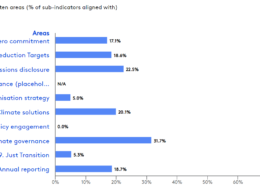The latest research from BCC indicates that the global carbon credits market, valued at $267.8 billion in 2023, is projected to grow to $1.2 trillion by 2029, achieving a compound annual growth rate (CAGR) of 28.4% over the forecast period. By volume, the market is expected to expand to 28 gigatons, growing at a CAGR of 23.1%.
The report ‘Carbon Credits Market: Global Outlook’ analyses the carbon credit market across various types, end users, and regions, measuring both value (in billions of dollars) and volume (in gigatons). It includes competitive intelligence, ranking companies based on their carbon credit offerings, and estimates market size based on revenue from carbon credit project developers. The report also provides an ESG (environmental, social, and governance) analysis, highlighting recent industry activities and detailing market dynamics, emerging technologies, and global trends.
As per the research, Europe leads the market, driven by the EU ETS system established in 2017, which many countries have adopted to address greenhouse gas emissions. European industries favour high-quality carbon credits, enhancing revenue in the compliance market.
Despite a decline in the voluntary carbon credits market, it remains a significant growth driver in the global industry.
According to UNCTAD, China, the US, and India are the top three CO₂ emitters, responsible for over 50% of global emissions, with the top 20 countries contributing 80%. Initiatives such as the Kyoto Protocol, carbon pricing, emissions trading schemes (ETS), and carbon dioxide removals (CDR) are gaining traction globally.
In 2023, ETS and carbon taxes generated $104 billion in revenue, with ETS contributing 70% and carbon taxes 30%. Key factors driving this growth include regulatory pressure to reduce carbon emissions and increasing investments in eco-friendly technologies
The report said that governments are implementing rules and laws to lower CO2 and greenhouse gas emissions, including emission limits, carbon taxes, and incentives for cleaner technologies, all aimed at combating climate change. Also, there is growing investment in environmentally friendly technologies, such as renewable energy (solar and wind power), electric vehicles, and energy-efficient products, aimed at reducing pollution and protecting the planet.





















